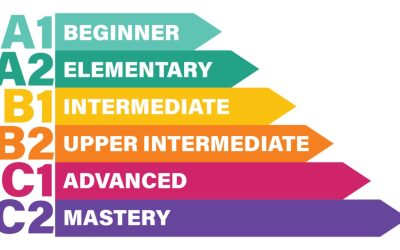The Rise of Artificial Intelligence
AI is here to stay — and that’s a great thing!
AI, a truly wonderful tool, is a content generator that has advanced immensely since its release: it can answer questions on any topic, find images, convert file formats, generate spreadsheets, record, or play audio. Incredible.
In this blog, we’ll explore how we view the impact of this tool on our daily work, because for those of us who work with languages, AI plays a role in both teaching and translation.
AI in English Teaching
As far as education is concerned, its main function is a time-saving one—not only does it provide information in seconds, but it also generates different types of practice exercises, summarizes texts or videos, and corrects pronunciation. For learners, it’s an invaluable learning companion, especially for beginners who may lack the confidence to communicate fluently. Plus, it’s available 24/7.
AI as a Support Tool
Now, we believe it’s essential to remember that it is just a tool. What do we mean by that? Letting AI generate content without thoroughly checking it—whether for accuracy (since let’s be honest, it’s not infallible, at least for now) or relevance—means undervaluing ourselves as humans, falling into passive and inert comfort, and buying into a false belief: that AI is here to replace us.
Think of AI as a food processor: it can chop, mix, knead, whisk, and blend faster and more precisely than most of us—but we provide the ingredients, the measurements, and the plating. That’s what the recipe is really about.
The Importance of the Human Factor in Teaching
In education, the human factor is essential. Aside from supervised content—which we can partially delegate to technology—when it comes to guidance, emotional support, understanding learners’ needs, identifying fears, frustrations, reasons behind lack of progress or dropouts, recognizing achievements and celebrating them, we are irreplaceable as all of them lie on the opposite side of “artificial”.—
AI in English Translation
As far as translation goes, AI brings speed and efficiency to the table. However, despite its many advantages, being seduced by it could be a dangerous path.
Can AI Match a Human Translator?
When it comes to quality, artificial intelligence is no match for a human translator. A human translator’s ability to detect irony, double meanings, cultural nuances, and idiomatic expressions is uniquely human. What are some common AI translation flaws? It often becomes overly literal, includes serious linguistic errors, fails to adapt content for the target audience, and ignores client-specific requirements. It also struggles to interpret ambiguous phrases that require context and the ability to read between the lines. Who hasn’t laughed or cringed at a poorly translated subtitle or nonsensical phrase?
Technical Translation and Trust in AI
When technical language is at stake, relying on AI to translate specialized texts is not advisable. A deep understanding of the subject and the precise use of specific terminology are critical. Few would trust AI with the translation of a medication leaflet, a court ruling, a financial statement, or a legal request.
Legal Risks: Confidentiality and Copyright
Finally, when dealing with confidentiality and copyright, overusing AI may lead to data protection issues and intellectual property concerns.
Our Perspective on AI’s Impact
At The T English, we firmly believe that quality and humanity are non-negotiable, essential values in our society.
“At The T English, we don’t see AI as an Alarming Intrusion but as an Absolute Inspiration — which enhances our human quality and our humane qualities.”
That said, if you’d find it helpful to explore how to apply AI in your English classes or official document translations, feel free to reach out to us.


